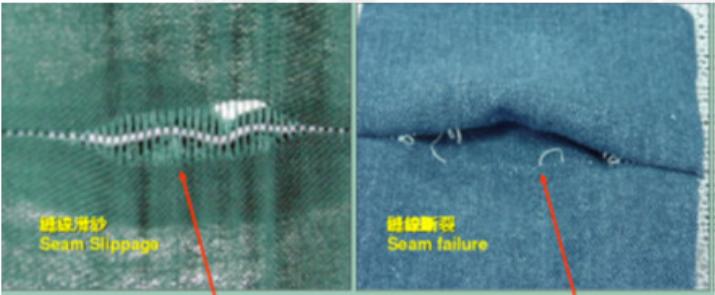 +86 152 6060 5085
+86 152 6060 5085
 +86 152 6060 5085
+86 152 6060 5085
Blog
Catalog
Latest Blog
Tensile Strength
Test method:
ASTM D 5034, determination of breaking strength and elongation of fabric.
Key points:
This test provides information on the potential breaking strength of the garment fabric when used by consumers.
Limitations:
It is not recommended to test knitted fabrics and other knitted fabrics with high elasticity (greater than 11%).
Test conditions:
The cloth should be placed in a constant temperature and humidity environment (21 ± 1℃ temperature and 65 ± 2%RH relative humidity) for at least 4 hours before testing.
Sample size:
4" x 8"(at least 4" x6"), both meridional and zonal.
Result:
The force recorded when the fabric cracks or breaks is the breaking force.
Tearing Strength
Test method:
ASTM D 1424, determines that flat woven fabric has a crack and continues to tear with the force required by the swing tester.
Key points:
This test provides information on the potential tearing strength of the garment fabric when used by the consumer.
Application:
Treated or untreated plain woven fabric, including heavy pulp, heavy glue or resin.
Not suitable for:
knitted fabrics, Felt and non-woven fabrics.
Test conditions:
The cloth is placed in a constant temperature and humidity environment (21 ± 1℃ temperature and 65 ± 2%RH relative humidity), at least 4 hours before the test.
Sample:
Both warp and weft must be tested.
Bursting Strength
Test method:
ASTM D3786 -- Use of a hydraulic rubber film bursting strength tester to determine the bursting strength of textile fabrics.
Key point:
Measuring the potential blasting force of knitted fabric.
Test conditions:
The cloth should be placed in a constant temperature and humidity environment (211° C temperature and 65 ±2% relative humidity) for at least 4 hours before testing.
Procedure:
The sample is placed on an extendable rubber film and locked. The rubber film is hydraulically extended and cracks the sample.
Scope of application:
knitted fabrics and non-woven fabrics.
Limitations:
It is not recommended to test flat weaves not covered with gum.
Seam Slippage
Test method:
Determine the force required to slide the weft in the direction of the warp or warp in the direction of the weft in a plain woven suture according to ASTM D 434.
Important:
Determine the tendency of yarn to slip from the stitches.

Email: hello@utstesters.com
Direct: + 86 152 6060 5085
Tel: +86-596-7686689
Web: www.utstesters.com